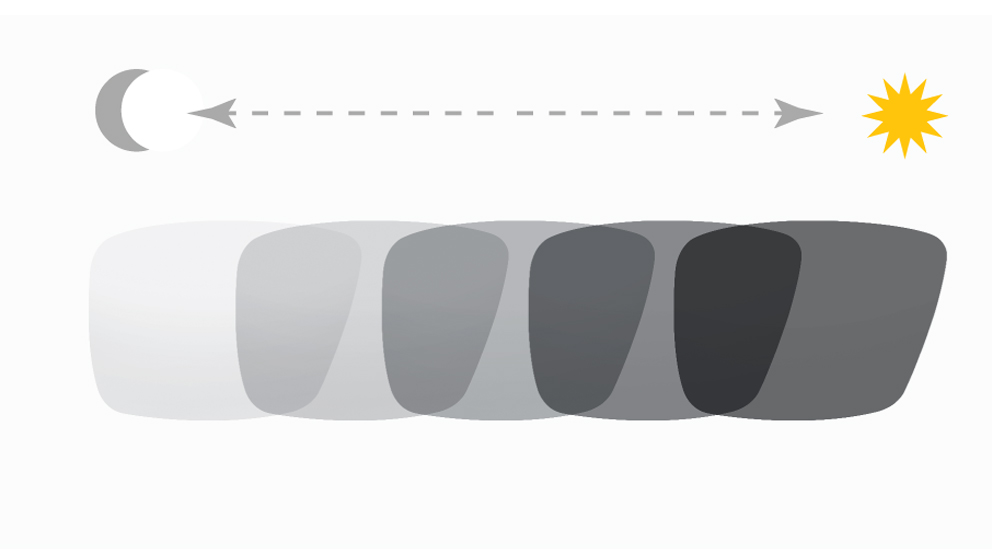
Transitions
Transitions are equipped with photochromatic dyes that enable the lenses to darken when exposed to the sun’s ultraviolet light. The greater the intensity of UV rays, the darker they become. When the UV rays are no longer present, including indoors or at night, they fade back to their original state.
In years past, transition were similar to a “fashion tint”. Lenses were not very clear inside or very dark outside. Today the technology has improved remarkably. The newest generation of transitions is completely clear inside and gets relatively dark when exposed to UV.
We never recommend transitions instead of a good polarized sunglass. Transitions is a useful technology for a lifestyle where one goes in and out throughout the day. But when planning to spend hours in the full sun or driving, it is important to wear a polarized sunglass.
Polarized lenses are the best quality sun lenses. Not only do they remove glare and improve visual quality, they play an important safety role for drivers. The principle behind polarized lenses is best illustrated by thinking of the lens as a Venetian blind. The blind blocks transmission of light from horizontal angles while allowing it from vertical angles. The person looking through the lens can still see clearly but polarization reduces the brightness and glare of light. Color, detail and contrast are improved as well as the comfort of those wearing them.
Progressive lenses address separate visual needs in one lens, with a ‘distance viewing’ area in the upper portion of the lens and a ‘near vision’ area in the lower portion of the lens. Rather than a line separating these areas, the middle area progressively changes from distance to reading. The middle area serves as intermediate vision correction.
